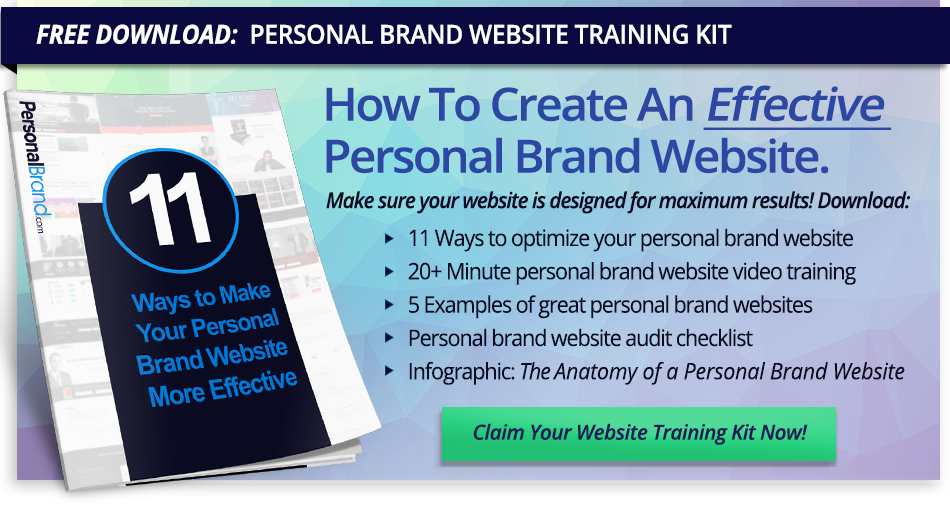The 3 Stages of Building A Successful Personal Brand Business
Building a personal brand is one of the most challenging projects because there are so many different aspects that go into them, and there’s so much confusing, conflicting, and flat-out wrong information out there in the marketplace.
The purpose of this post is to cut through the noise and explain the 3 necessary and sequential steps to building a successful and sustainable personal brand.
I want to provide clarity and direction so you can be confident you are spending your time, energy and resources on the right things, and you aren’t needlessly spinning your wheels.
The 3 stages of building a successful personal brand are:

Everything we do at PersonalBrand.com is rooted in these three stages: Architect, Monetize, Scale. Everything we do – from our blog posts, to our workshops, to our private clients – all stems from this high-level framework, and the info that I am sharing with you here in this post.
Let’s dive in.
1. Architect
Architecting your personal brand is all about designing and developing your messaging, visual presence, and business model. This is also what we call your Foundation.
The first step of any personal brand (or any business for that matter) is creating a solid foundation. This involves developing supreme clarity on who you are, what you do, and who you serve. It’s not only critical that you are clear on it, but that you also develop the ability to speak to all three of those things in a very powerful way.
When you are crystal clear on who you are, what you do, and who you serve, everything else falls into place.
It’s much easier to identify the products, services, and content you need to create. It becomes more self-evident where you should spend your time, effort, and marketing dollars. And, it guides the development of your brand identity and overall presence because you know who you are speaking to and can determine what visually resonates with them best.
The #1 most important aspect of your personal brand is designing and developing a sound business model. There is a huge difference between owning a business, and owning a job. Most people who are building personal brands, are just glorified freelancers. It’s not a bad thing, that’s where everyone starts. But, it’s important to not fool yourself, and have a vision and be working towards building a true business as quickly as possible.
This is why it’s important to design and develop a business model that aligns with your goals, ambitions, and ideal lifestyle from day one.
You can do everything else right, but if you don’t build a sound business model, you will create a monster.
This reminds me of one of my favorite quotes from Seneca:
“It is inevitable that life will be not just very short but very miserable for those who acquire by great toil what they must keep by greater toil.”
You don’t want to work hard to build a big income that’s completely dependent on you working even harder to maintain it.
That sounds less like building a business, and more like self-inflicted slavery to me.
Focus on your business model, simplify, specialize, be world-class at one thing first.
2. Monetize
Once you have designed and developed your messaging, visual presence, and business model it’s time to identify how you are going to generate revenue.
No personal brand can have maximum impact without being able to predictably generate revenue.
Monetization is all about recognizing opportunity in the marketplace, creating great products and services, designing compelling offers to sell your products and services, and getting that offer in front of people through various marketing channels – both online and offline.
This stage of Monetization can take a long time to really hone in, but it’s the most important part of building a successful business.
Fire Bullets, Then Cannonballs. This is a concept introduced in the book Great by Choice by Jim Collins.
First, you fire bullets (low-cost, low-risk, low-distraction experiments) to figure out what will work—calibrating your line of sight by taking small shots.
Then, once you have absolute validation of your idea, you fire a cannonball (concentrating resources into a big bet) on the calibrated line of sight.
Calibrated cannonballs correlate with outsized results; uncalibrated cannonballs correlate with disaster.
Your success is directly correlated to your ability to turn small proven ideas (bullets) into huge wins (cannonballs).
We live in a world with a microwave mentality. We see the success other people have with their personal brands, and we want to experience that now. It’s important to know that success comes from repetition, tinkering, and validating ideas.
If you don’t yet have an offer that you know people see the value in and are willing to pay for – that is your first step.
You must have an offer that converts before you try to scale.
Unfortunately, most people don’t understand the importance of this. They end up attempting to automate and build a business around products and services that are flawed from day one.
Learning how to test and fail fast is essential to getting the monetization piece right. You must approach it with a “let’s experiment”, learner’s mentality vs. a swing-for-the-fences, grand-slam-or-nothing mentality.
3. Scale
As we just discussed, people try to jump to this part of their business way too early – in fact, too many people START here instead of starting with their messaging and monetization. Huge mistake.
That being said, the Scale stage of your business is something that should be in the back of your mind as you navigate Architect and Monetize. The concept of scale should be considered, discussed and used in big decisions made early on. Nothing is worse than investing the time, effort, and energy into a product and business that has an extremely limited ability to scale. Scale can be limited by delivery of the product, market size, expense of acquiring a new customer, and a whole slew of other factors.
No amount of optimization, automation, and marketing magic can fix a flag planted in the wrong place.
This is something that we work with our group coaching and private clients on – making sure that you plant your flag in the right place, and providing guidance on this path through the three stages of architect, monetize, and scale.
More specifically, if you are trying to build a business in a very very small niche, targeting people who aren’t even aware they have a problem, you probably are going to be in for a very rough ride.
If you’re going to put all the time, effort, and energy into building a product, and building a business, it’s best to plant your flag in an area where there are a surplus of potential customers and clients, actively seeking a solution you provide.
You don’t want to absolutely nail your business model, monetization method, and work out all the kinks to automate your business, then go to scale your business to find that it’s going to max out at $200,000 per year. The same EXACT amount of effort could be invested into an idea/business that maxes out at $2M or even $20M per year.
Plant your flag in a place ripe for growth.
If you enjoyed this post, be sure to join our private, Personal Brand Builders Community to stay up-to-date on the latest tools, strategies, and best practices for building your personal brand. It’s free… and awesome!
Also, follow us on Facebook, and Twitter for updates every time we publish!


